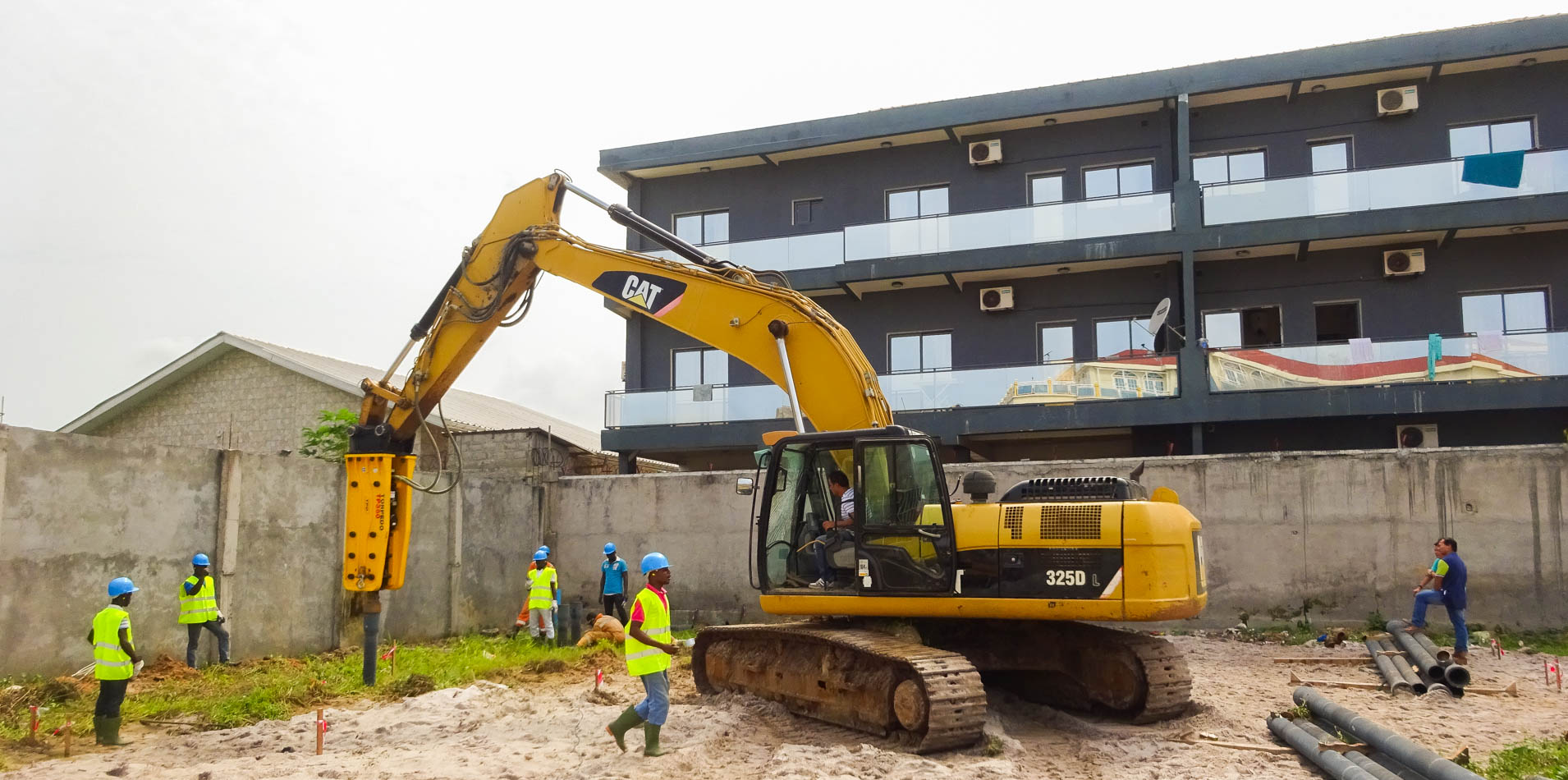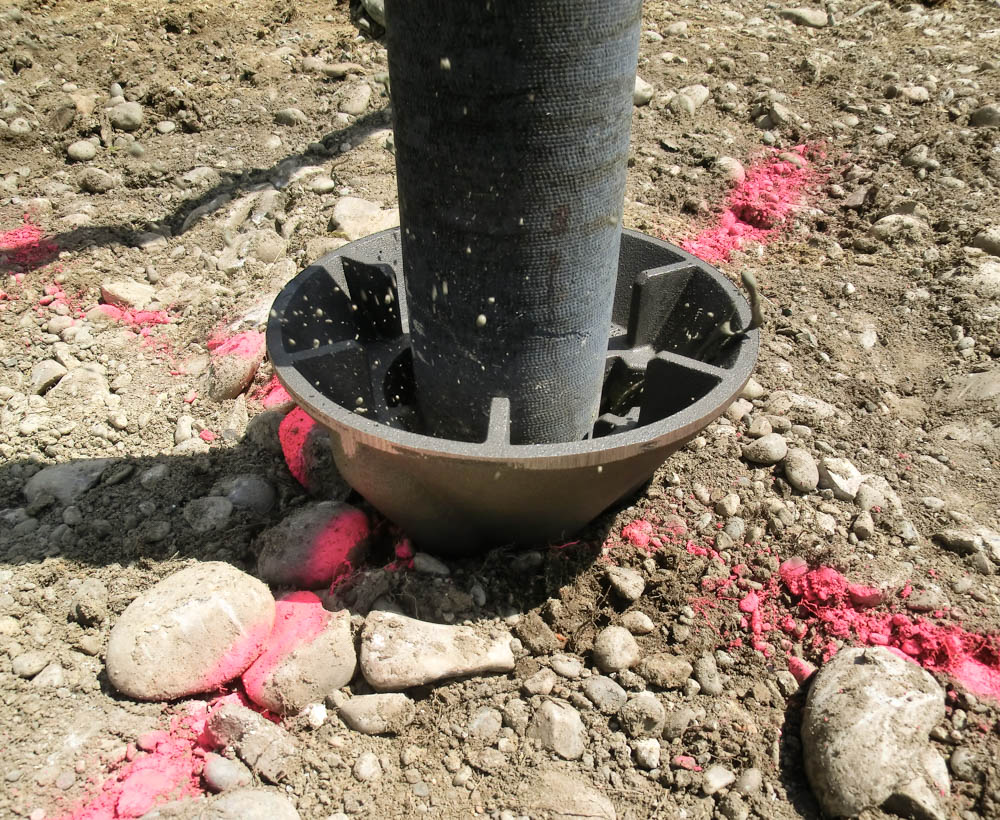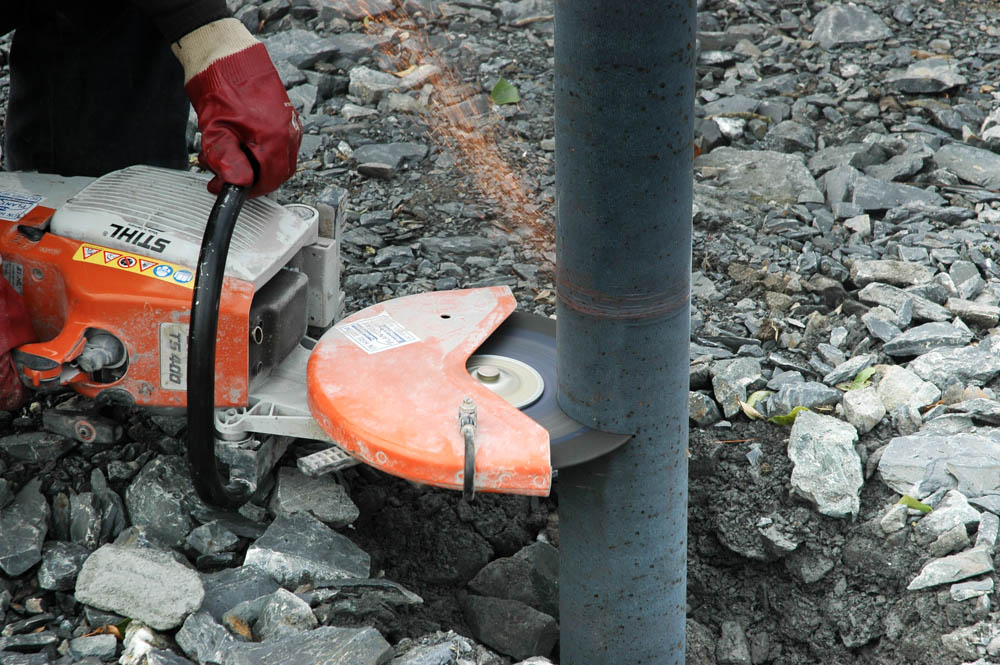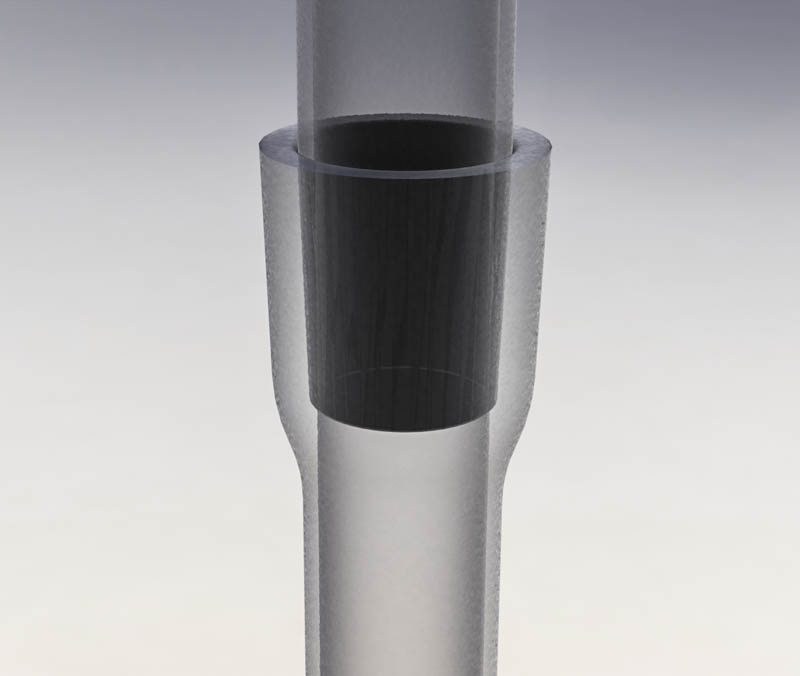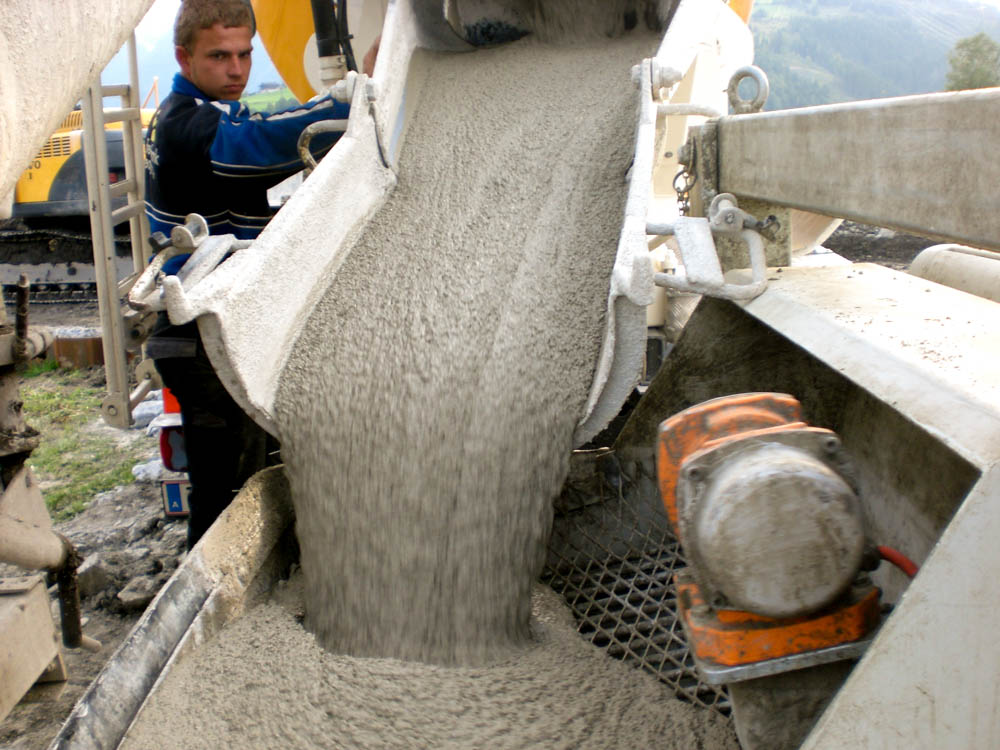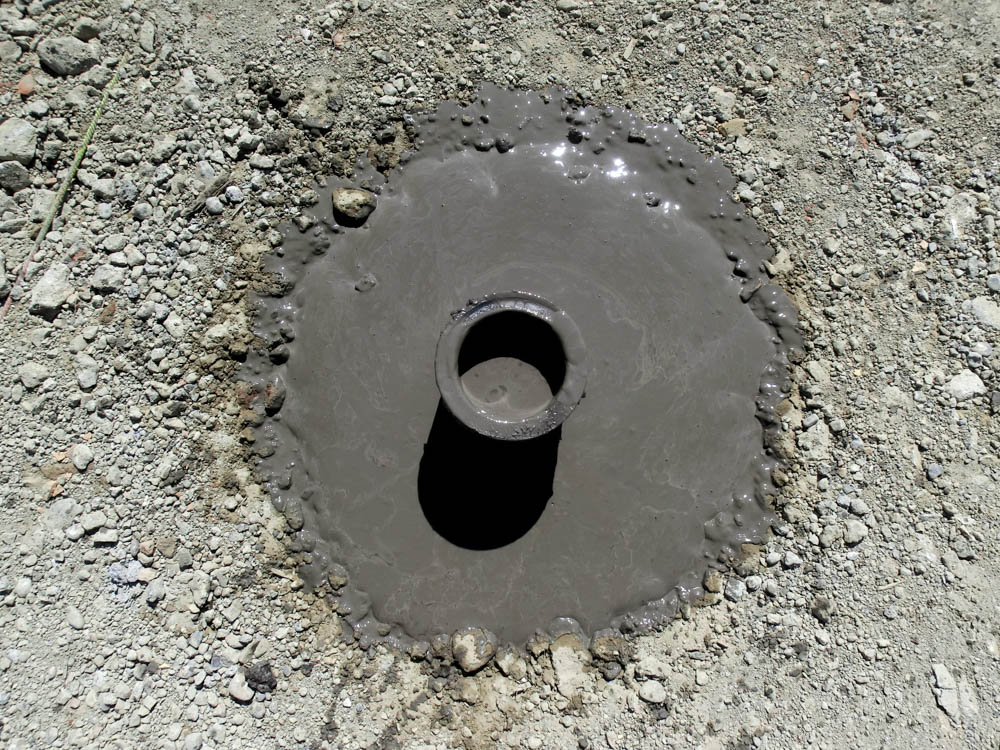Installation
Versatile equipment
The use of compact and lightweight equipment decreases requirements in terms of access, piling platform and workspace taken up on the job site. Standard equipment consists of a powerful and high impact rate hydraulic breaker mounted on a tracked excavator. It is available very quickly and easily moveable. The system reduces the investment and set-up costs by notably cutting mobilization and demobilization times.
Simultaneous drive and grout technique
Shaft-grouted ductile iron piles
Ductile iron piles combine driving installation and simultaneous injection methods. The starter pile piece is fitted with an oversized conical shoe which is open upwards, but tapered downwards. Simultaneously when driving the pile, the annular space formed by displacement between the pile shaft and the surrounding soil is filled with mortar or grout. Depending on the nature of the ground and injection pressure, the mortar penetrates more or less deeply into the surrounding soil. Even in artesian groundwater, the water does not hinder pile installation in any way. The hardened grouted zone around the pile shaft constitutively builds up a bonding to the surrounding soil, providing high skin friction resistance in addition to the tip resistance. The mortar or grout also guarantees an effective long-term corrosion protection of the pile shaft.
Pile lengths can be easily reduced or extended according to the project requirements by adding additional pile sections with the Plug&Drive© joint system. Piles of more than 50 m have already been installed.
Shaft-grouted ductile iron piles are commonly driven to predetermined lengths in homogeneous or multilayer soils. The shaft grouting allows you to develop high skin friction and considerable tip resistance in both fine- and coarse-grained soils thanks to the creation of an interfingered soil/ pile interface and to the lateral soil displacement.
Soil displacement
The displacement piling method eliminates the costs of drill cuttings removal and consequently helps reducing the on-site traffic. When the ground is contaminated, this also eliminates the additional costs resulting from treatment and disposal. The compression of the surrounding soil beneath the pile tip and along the pile shaft increases the mechanical characteristics of the ground and therefore strongly improves the skin friction and end bearing capacity of the pile.
Measuring soil resistance to pile insertion results in an immediate control of pile bearing capacity during installation. Monitoring penetration rates versus depth by driving easily documents successful pile installation and allows you to reveal the irregularities of the ground locally and to act accordingly, thus eliminating uncertainties due to soil variations.
High penetration force
Regardless of pile length, the impact energy remains wholly concentrated on the shoe. This explains the remarkable penetration force and driving performance of ductile iron piles as well as the low vibration level. The induced ground vibrations are generally confined to the immediate vicinity of the pile.
Peak particle velocities (PPV) are much lower than the critical threshold for very sensitive construction projects. Ductile iron piles can be installed extremely close to neighboring buildings and up to 40 cm from existing structures.
Ductile iron piles are commonly driven with hydraulic hammers using state-of-the-art breaker technology. Designed for heavy work (1.7 to 2.5 t) they have a high impact rate (300 - 800 blow per minute) and a single blow energy of 3,000 to 5,000 Joules. This technique ensures better bearing capacity than the vibro piling installation method.
Speed of installation
The rate of work is high. The daily output can reach up to 200 - 400 metres depending on the installation method used. A crew consists of two persons. An additional operator is required for injection if the piles are grouted. Ductile iron piles are directly cut-off to project level. This eliminates costs and delays caused by traditional pile breaking and allows direct planning of the concrete works.
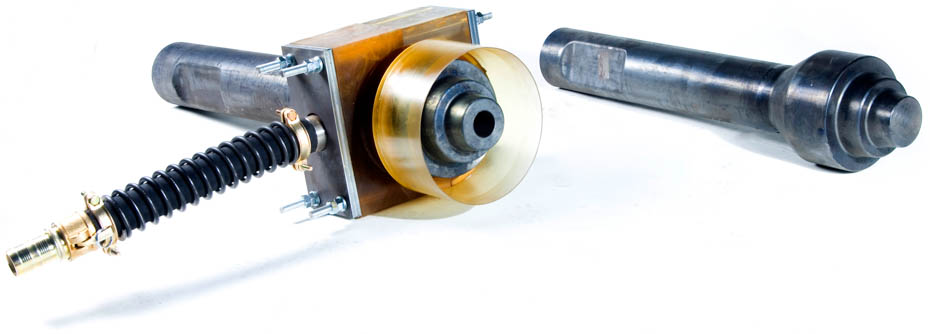
Driven steel pipes
Closed-ended ductile iron piles
In their most basic form, ductile iron piles are top-driven to refusal and without grout injection. They are commonly used as end-bearing piles and deeply embed into bedrock or a very firm cohesive substratum underlying thick soil layers of very poor condition. The bore of closed-ended ductile iron piles can be concrete-filled immediately after driving is achieved, thus creating a composite cast iron and concrete structure and giving additional strength.
Closed-ended ductile iron piles are used when very poor ground layers of mostly high and variable thickness must be driven through, and when embedment in the bedrock is possible. They are driven to refusal and naturally adapt to variable depth-to-bedrock. The structural strength of the tube, subsequently filled with mortar, is then decisive.
Concrete, mortar and grout
Ductile cast iron piles can be driven alone and then do not require any addition of concrete (closed-ended end-bearing piles embedding in the bedrock). However, in most cases, ductile cast iron piles are installed in combination with shaft grouting and/or pile core filling using concrete, mortar or grout.
The aggregation of concrete, mortar or grout with the metal tube makes it possible to increase the structural resistance of the pile by creation of a cast iron and concrete composite structure. The bearing capacity of the pile is increased by improving the soil/pile interface with shaft grouting, and the sustainability of the pile is assured through the creation of effective corrosion protection.
Verification of the bearing capacity
The bearing capacity of ductile iron piles can be verified during their installation by evaluation of the soil penetration resistance to the driving energy applied. Recording penetration rates versus depth gives a direct correlation between the driving time and the unit skin friction and tip resistance design values.
This efficient method makes it possible to increase the structural safety level of the project and to reduce foundations costs by naturally adapting the pile lengths to the variable ground conditions actually encountered. It means a systematic quality control of the successful installation of piles and a verification of homogeneity of the real subsurface conditions.
